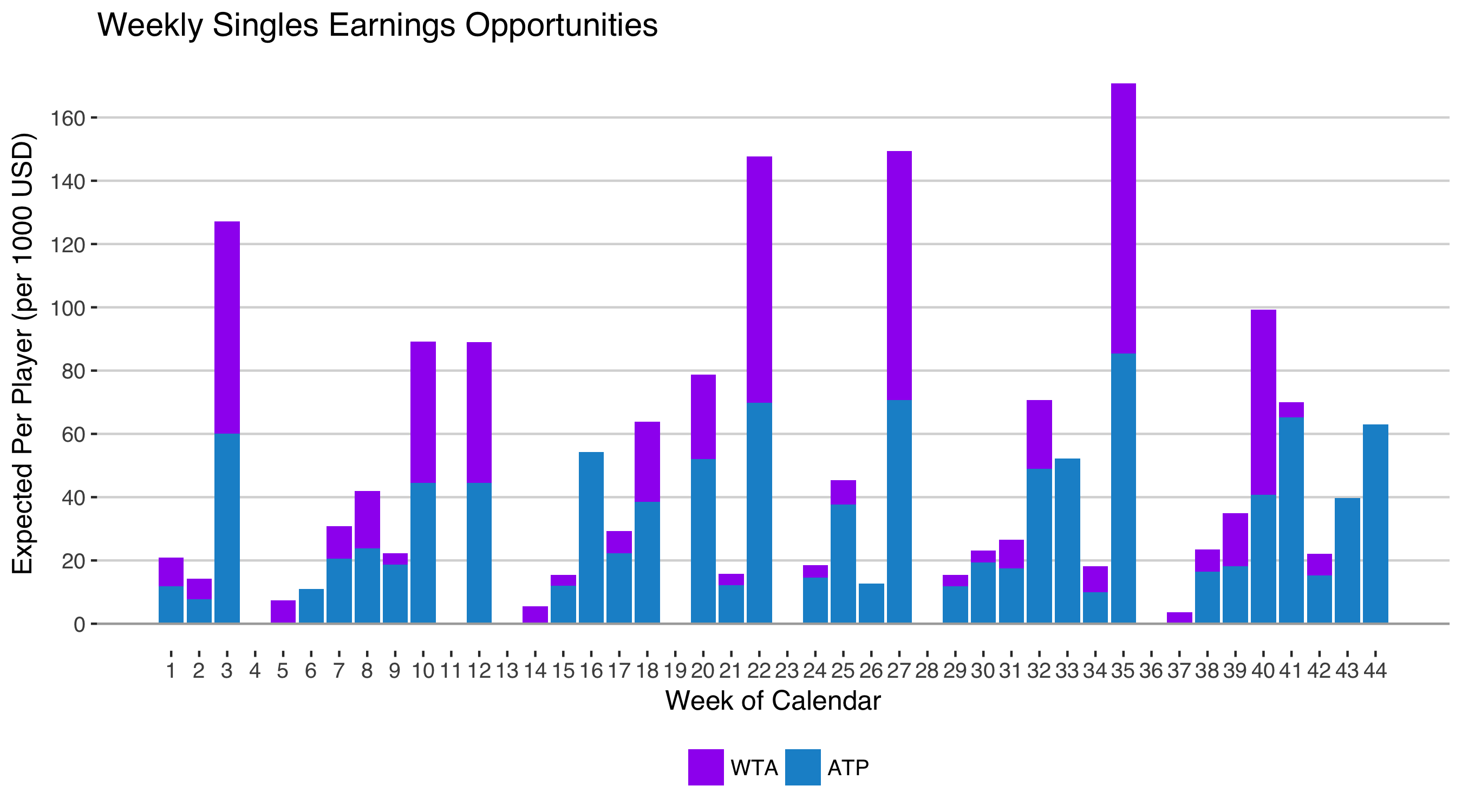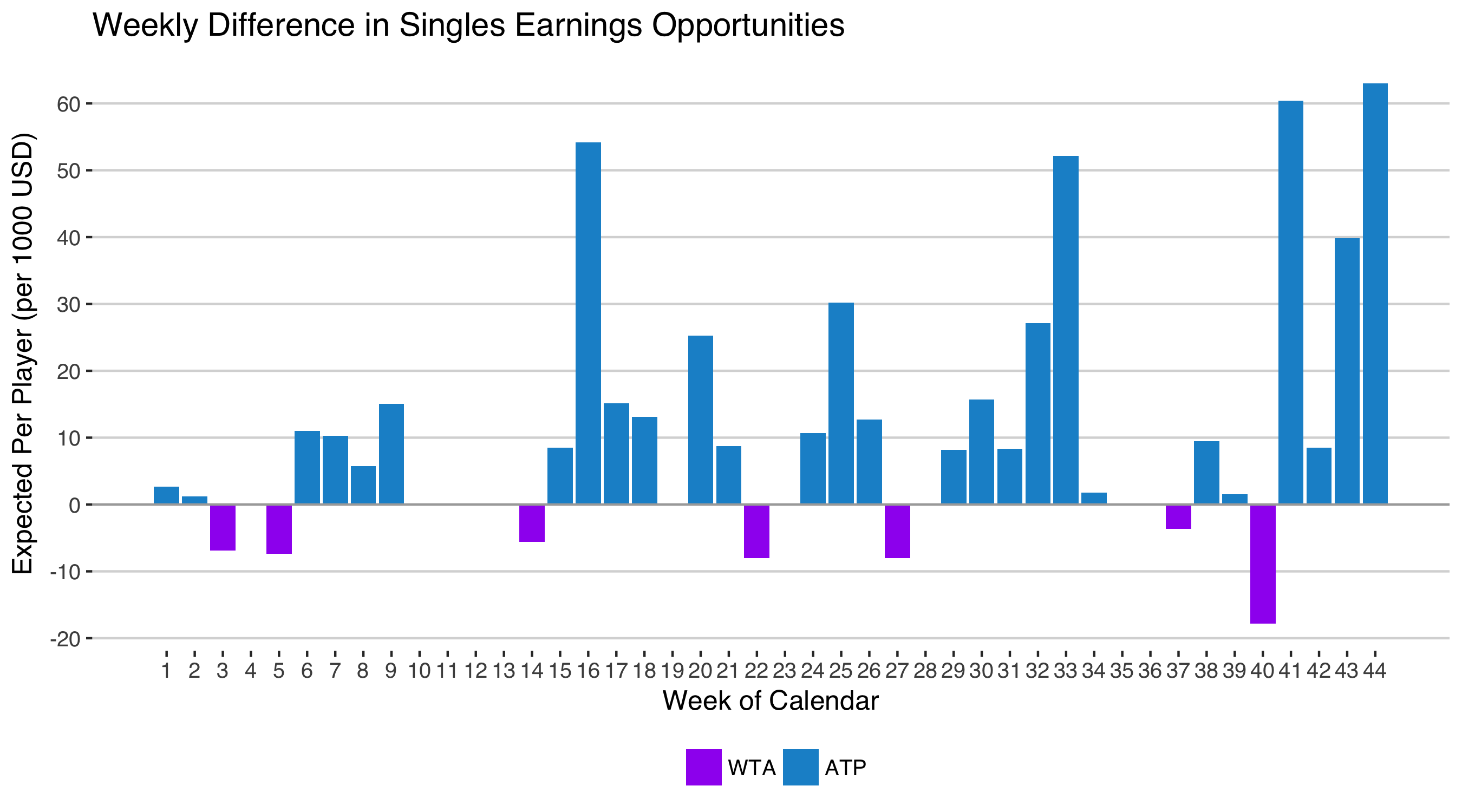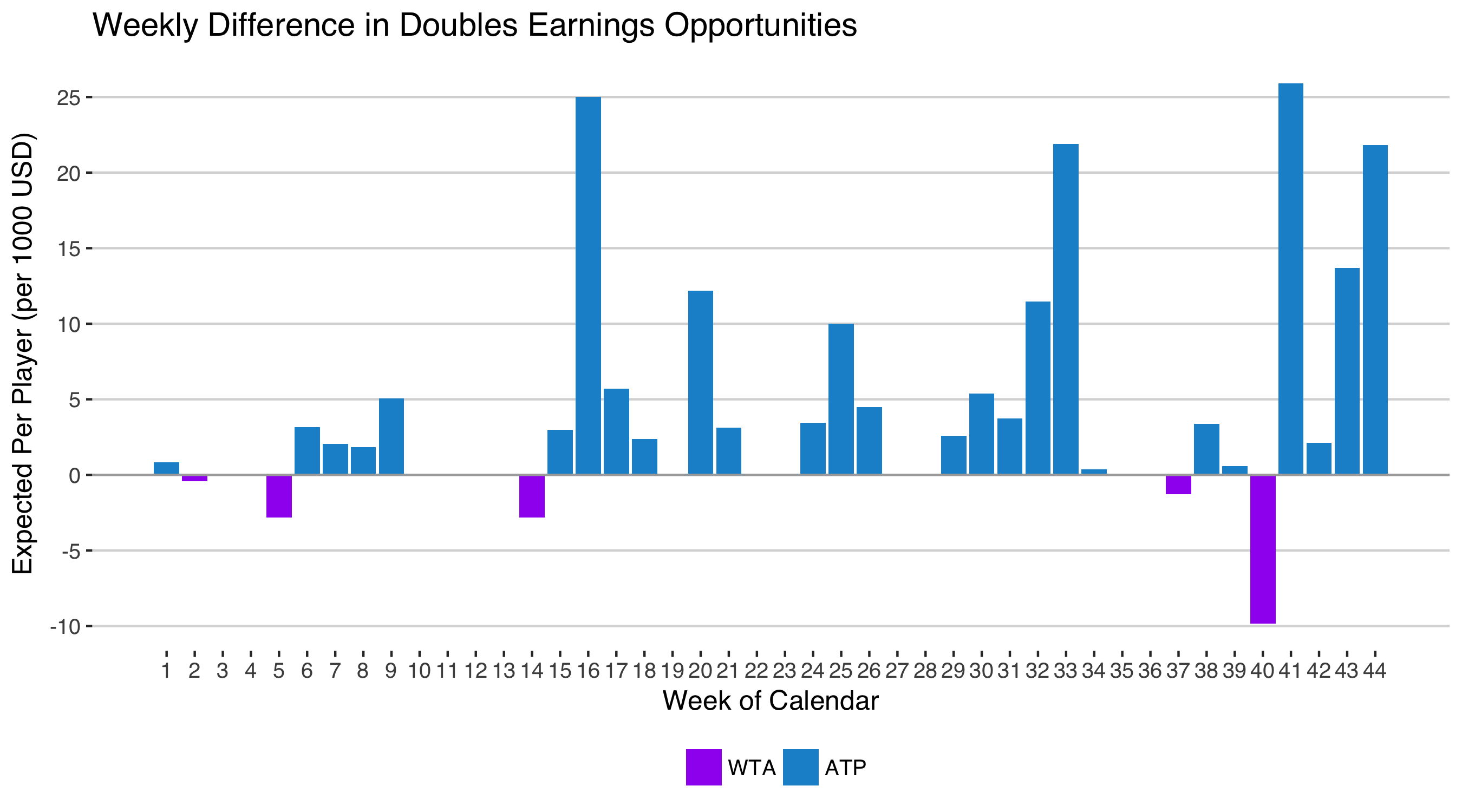Using Weekly Earnings Opportunity to Measure the Prize Money Gender Gap
Prize money has been the primary yardstick for measuring gender inequality in professional tennis. Most in-depth studies of prize money differences have focused on earnings of top players or prize money commitments by tournament. In this post, I take a different view on prize money differences by focusing on earning opportunities in each week of the the tour calendar.
You can find a variety of analyses on the Web about prize money differences between the men’s and women’s tours. Many of these have looked at the career earnings of top male and female players. Others have looked at the prize money allocated on a tournament-by-tournament basis.
When it comes to the inequality felt by any individual player, both of these approaches have some drawbacks. Most players are not the top earners in the game, so the comparisons of the highest earners is of limited relevance for them. Second, tournament-by-tournament comparisons do not account for draw size differences in singles, qualifying, or doubles draws; nor do they consider where tour events overlap on the calendar, forcing a competitor to choose at most one of these to enter.
A measure that gets closer to a player’s experience of prize inequalities considers their likely earnings opportunity in any competition week.
Take this week, for example. The China Open is the only WTA event running this week. The draw size for the women’s event has a singles draw of 60, a qualifying draw of 32, and a draw of 28 doubles teams. That means there will be 84 players splitting the singles money and 56 splitting the doubles money. With a pot of 8.2 million US dollars, the draw size translates into an expected earning per singles player of 71 thousand.
On the men’s side, they have two ATP 500 events to choose from this week: the China Open and Rakuten Japan Open. Both are 32 singles draw events with qualification draws of 16 and doubles draws of 16. The respective prize money is $4.7 million and $1.9 million. Since players can only compete in one event per week, those numbers mean ATP earnings opportunities are an expected 46 thousand per singles player, lower expected earnings for men in this week.
When we look at the week-by-week picture in expected earnings, we see that weeks like this week where the WTA earnings potential exceeds the ATP are rare. In the majority of weeks, the chart below shows that the ATP (in blue) eclipses the WTA (in purple) earnings. In fact, next week is a more stereotypical situation. The men will be playing at the Shanghai masters with 65K in expected earnings, while the women will have 3 International events to choose from at only 5K in expected earnings per player.

We can see the earnings gap more clearly by taking the difference in expected earnings in each week. This is charted below and reveals that there are 27 of 37 weeks of competition where an ATP player is expected to earn more than a WTA player. The difference in those weeks is a median of 11K per player.

Earnings are less overall in doubles but the gender gap follows the same trends as in singles. There are 26 weeks where doubles male players are expected to earn more than WTA doubles players at tour events, with men earning a median of 3.5K more per week in doubles play.

These comparisons of per capita expected earnings echo the major conclusions of early studies on gender inequalities in tour prize money: that payouts are still far from equal for the WTA and ATP, with most differences happening at the levels below the Grand Slams. An advantage of the per capita numbers is that they can give us a better sense of how those differences are actually experienced by individual players. And, from this point-of-view, the week of the China Open must feel like a rare boon in the calendar for women’s players.

